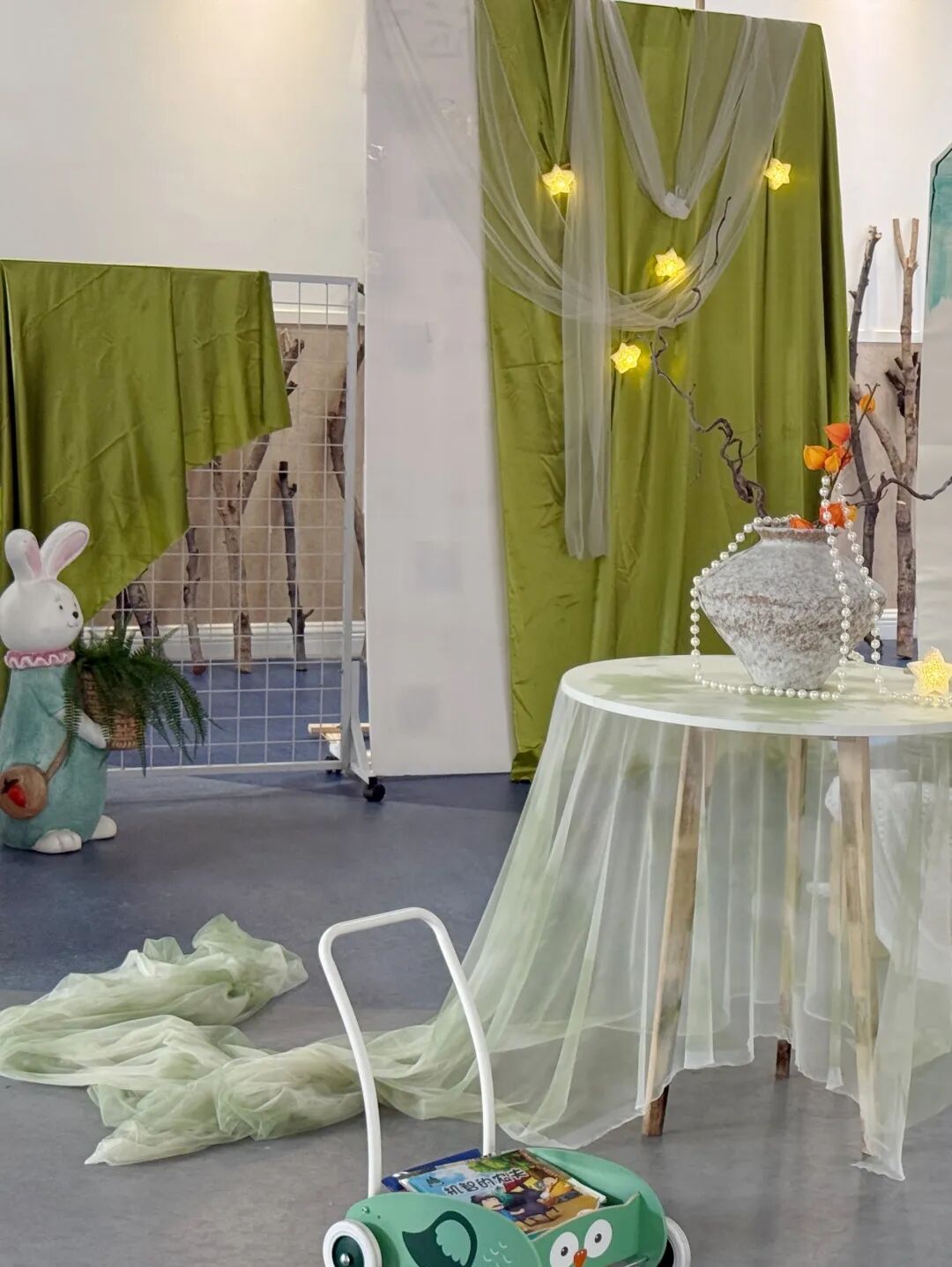王老师微信:18610206462
每位老师都在用尽全力装饰最有创意、最温暖的教室,本文是关于新学年的环创主题,
从简单挂饰、主题布场、装饰画、再到公告栏创意应有尽有~
挂饰 素材
1好吃的水果
秋天到了,丰收的季节。
好吃的水果会不会让你觉得幼儿园充满了果香气息?
材料:彩色纸、剪刀、固体胶、线绳。
制作步骤:
1、折扇子的方式折出半圆形水果。
2、剪些水果的装饰贴好。
3、做好的各样水果扇,用线绳串在一起。
Stude
A
Properties: Recorder, Overhead Projector and a map of world.
Teaching Objectives:
1. Practise listening ability.
2. Revise the grammar: the Comparative Degrees of Adjective and Adverbs
The Past Perfect Tense
Language Focus: Checkpoint 18
Teaching Procedures:
I. Showing the teaching aims
II. Revision
Check homework, then ask the students to read the partners’ homework to share with each other.
Revise the use of the Infinitive
III. leading in
T: Today we’ll learn something about Coco. Do you know where she is from?
IV. Listening practice
Play the tape or for the students to listen and find the answer, then look at the workbook, Exercise 1, go through the questions with the students and make sure they can understand what they mean. Play the tape again, let the students discuss their answers in pains before the teacher checks the answers with the whole class.
V. Presentation
Show the students a map of the world, and ask: What map is it? Help the students find “China” and “India” on the map. Let the students discuss the two countries: They are developing countries. They have a large population in the world.
Ask: What’s the population of China and what’s the population of India? Let the students read Part 2 and answer the questions. (China’s population is 1 328 000 000 and India’s population is 1 000 000 000). That’s to say India’s population is smaller than China’s .Ask the students to use the words in the box to complete the passage, then read together, finally ask the students to retell the text.
VI. Practice
Revise the Grammar: The Past Perfect Tense, give some examples:
1. He had left before his wife came back.
2. I remembered that Peter had already got a bike.
3. By the end of last month, he had learned 2000 new words.
4. When I got to the cinema, the film had begun.
Then ask the students to do Exercise 3. The answers are: 1 C 2 E 3 A 4 B 5 D. Let the students read these sentences together.
VII. Practice
Ask the students to do Exercise 4 first, then check the answers. The answers are: had, in, is, more, the, had, to, in, had, that, to, us, and, to
VIII. Workbook
Give the students five minutes to finish workbook. Do Exercises 1, 3 and 4. Then check the answers.
The answers to Exercise 1 are: took, went, found, was, called, told, had happened, said, would go, came, was found, checked, founded, said, stole, went, enjoyed, came, found, had stolen, had
The answers to Exercise 3 are: I worn out 2 try on 3 slow down 4 made up my mind 5 am pleased with 6 were angry with, deserve to 7 at least 8 as if 9 carried on
IX. Summary
Exercises in class
Fill in the blanks according to the text in this unit.
Lucy and Lily are___1___. They are living together___2___. But sometimes they fight. It doesn’t last too___3___. They___4___very well with each other again.
They look___5__, so it’s hard for people to recognize them: Who is Lucy___6__Lily. We always___7___mistakes. They feel___8__. They like most of the same things, for example: music, food and___9__. But Lily likes to___10__, Lucy likes to___11__, they don’t like the same colour,____12___. So they have some___13____Sometimes they disagree, but they never___14__. They love each other and they are___15___happy that they are twins.
Answers: 1.twins 2.most of the time 3.long 4.get on 5.the same 6.or 7.make 8. the same 9. books 10 .dance 11. sing 12. either 13. differences 14. fight 15.both
X. Homework
Prepare for the final examination.
Lesson 70 教学设计方案
Properties: Computer, Projector, PPT document provided.
Teaching Objectives:
1. Let the students understand the dialogue and learn new words.
2. Go over the Past Perfect Tense.
Language Focus:
New words: British, fail, summit, misty, mist
Useful expressions: disappear into, the first men to do tins, try to reach the top of
Teaching Procedures:
I. Showing the teaching aims
II. Revision
Ask the students to act out the dialogue is provided in Lesson 69-1.asf
III. Lead in
Give the students some information and pictures about Mount Qomolangma, and check their homework. Let them speak something about the history of climbing the Mount Qomolangma.
For example:
It was formed 60million years ago and ascends to the height of 8850. Surveyor General Andrew Waugh proposed to name the mountain Everest after his predecessor, George Everest. This name prevailed until today, although the mountain has two local names – Qomolangma in Tibetan, Sagarmatha in Nepali.
IV. Watch and listen
Ask the students to watch the flash Because it is there.swf which is provided. Listen the text carefully, and finish the questions:
True or False
1. Mount Qomolangma is the tallest mountain in the world. ( )
2. George Mallory is a professional (职业的) mountain climber. ( )
3. Mallory had tried four times to reach the top of the mountain. ( )
4. In 1921 he tried to climb the mountain for the first time. ( )
5. Edmund Hillary and Tenzing Norgay were thought to be the first men to reach the top of the mountain. ( )
6. Edmund Hillary found Mallory’s body in 1999. ( )
Answers:
1. √ 2. × 3. × 4. √ 5. √ 6. ×
V. Read the text
Let the students read the text carefully and grasp the main idea of this article. And find out what happened in different years (1921, 1922, 1924, 1953, 1999).
nne’s Best Friend Do you want a friend whom you could tell everything to, like your deepest feelings and thoughts? Or are you afraid that your friend would laugh at you, or would not understand what you are going through? Anne Frank wanted the first kind, so she made her diary her best friend. Anne lived in Amsterdam in the Netherlands during World War Ⅱ. Her family was Jewish so nearly twenty-five months before they were discovered. During that time the only true friend was her diary.
She said, ”I don’t want to set down a series of facts in a diary as most people do, but I want this diary itself to be my friend, and I shall call my friend Kitty.” Now read how she felt after being in the hiding place since July 1942. Thursday 15th June, 1944 Dear Kitty, I wonder if it’s because I haven’t been able to be outdoors for so long that I’ve grown so crazy about everything to do with nature. I can well remember that there was a time when a deep blue sky, the song of the birds, moonlight and flowers could never have kept me spellbound. That’s changed since I was here. …For example, one evening when it was so warm, I stayed awake on purpose until half past eleven in order to have a good look at the moon by my self. But as the moon gave far too much light, I didn’t dare open a window. Another time five months ago, I happened to be upstairs at dusk when the window was open. I didn’t go downstairs until the window bad to be shut. The dark, rainy evening, the wind, the thundering clouds held me entirely in their power; it was the first time in a year an
ts exercise, fit, strong, pollutionshare… with…, notice, pay attention to, signals, safety rules, helmets, light-colored, reflectors, in case of, first aid, call 120Stage 4:Post-readingFinish Ex.2 and a translation task.Stage 5:ProjectHow can we be safe on the road? Write a passage according to the information in 3, add your own ideas. The following words may help you.should (not)/must (not)/had better (not)play on the road; listen to music;look left/right; pay attention to;obey traffic rules; first aid;Stage 5:Summary and homework1. Summary:New words and phrases:truck, notice, safety,in a word, look out, pay attention toUseful expressions:Bicycle riding is good exercise.In a word, the best way to be safe is to be careful.Safety rules for bike riders:They must wear helmets to protect their heads.…, bicycle riders should know how to give first aid.2. Homework:a) Review the key point in Section C.(2) Complete the passage of Project.(3) Preview Section D. Collect information about bicycle races.V. Blackboard designSection CWords and expressionssafety, truck, notice, injury, signal, pay attention to, in case ofcan master the rules of changing original verbs into past tense, for example, learn-learnt, study-studied and so on.
Ability aims:
Students’ ability of listening will be improved and they can make a new conversation by using simple past tense.
Emotional aims:
Students will be interested in learning English grammar and they will have the courage to challenge the new things.
Teaching key points and difficult points:
Key points:
Students can master the rules of changing original verbs into past tense, for example, learn-learnt, study-studied and so on.
Ability aims:
Students’ ability of listening will be improved and they can make a new conversation by using simple past tense.
Emotional aims:
Students will be interested in learning English grammar and they will have the courage to challenge the new things.
Teaching key points and difficult points:
Key points:
Students can master the rules of changing original verbs into past tense.
Difficult points:
Students will use simple past tense to describe an unforgettable experience that happened in the past.
Teaching procedures:
Students can master the rules of changing original verbs into past tense, for example, learn-learnt, study-studied and so on.
Ability aims:
Students’ ability of listening will be improved and they can make a new conversation by using simple past tense.
Emotional aims:
Students will be interested in learning English grammar and they will have the courage to challenge the new things.
Teaching key points and difficult points:
Key points:
Students can master the rules of changing original verbs into past tense.
Difficult points:
Students will use simple past tense to describe an unforgettable experience that happened in the past.
Teaching procedures:
Step 1 Lead-in
Greet students and sing a song Yesterday once more.
Ask students the topic of this song then lead in the new class naturally.
(Justification: the song’s topic relates to the past and it is a very classic English song, so students will be drowned in the music even try to study this song.)
Step 2 Pre-listening
Give some examples to introduce the rules of changing original verbs into past tense.
Let students make some sentences to describe an experience of their own.
(Justification: students will be familiar with the grammar point and they can have a basic awareness of the English grammar.)
Step 3 While-lisening
1. Extensive listening
Listen to the tape for the first time and answer the quest
Unit 1 How do you study for a test?
Teaching aims:
Knowledge aim:
Students can accumulate some useful words through reading, such as frustrating, conversation and so on.
Students will learn more ways to learn English better.
Ability aim:
Students can use some basic reading strategies including skimming, scanning and prediction to read efficiently.
Emotional aim:
Students will be interested in learning English and can find the best way to learn English well.
Key points and difficult points:
Key points: Students can master some useful expressions and comprehend the content of this passage.
Difficult points: Students can master some useful reading strategies and put them into practice.
Teaching Aids: PPT. pictures
Teaching Procedures:
Step 1 lead in
1. Greeting with my students
2. Free talk
Let students talk about why they learn English freely and invite some students to share their idea with us.
S1: because it is very useful for us to communicate with foreigners…
S2: because we should have a good score in English examination.
By this way, teacher will lead students to think another question as they believed that English is very important in our life. “How can we learn English well?” then teacherwill lead in today’s topic “how do you learn best?”
Step 2 Pre-reading
Discussion and prediction
Teacher will encourage students to discuss with their partners about the way they usually use to study English, at the same time, let them predict what the author will tell us in this passage.
Step 3 While- reading
1. Global reading
Ask students to skim the passage and try to summarize the general idea of it. Then let students scan the passage for some specific information and answer the following questions,
“How many persons are mentioned in this passage?”
“How many ways do the characters mention in this passage?”
2. Detailed reading
Students will be required to read the passage again to finish the chart below the passage.
Step 4 post-reading
1. Deal with the language points
After students have finished reading, Teacher will ask them try to find the new words and expressions in the passage. They should try to learn them by themselves. Then we will deal them together.
2. Pair work
Students will work in pairs to do a survey by using the expressions on the textbook. Then they should finish the chart below the passage.
Summary and homework
Ask students to do a survey on more students about their ways of learning English.
Blackboard design
ion:
What are they talking about?
(Justification: students’ ability of getting main idea through extensive listening will be improved.)
2. Intensive listening
Listen to the tape one more time and answer the questions:
1. What does Lingling’s grandma do?
2. What does Lingling’s grandpa do?
3. Is Lingling’s grandpa learning English now?
(Justification: these questions can help students grasp some detailed information of Lingling’s family, and also, their listening ability will be improved.)
Step 4 Post-listening
Four students in a group, share an unforgettable experience with their partners. PaWoman :Good morning,sir!Can I help you?Dad: Yes,please. What w 1 you like,Ann?Ann : A l 2 bowl of noodles w 3 carrot and beef. I’m hungry.Dad: Anything to d 4 ?Ann: Yes. A glass of orange j 5 .Dad: OK. What a 6 you,Tom?Tom: I’m not h 7 .Just a b 8 of water.Dad: All right. And I’d l 9 a cup of tea.Woman :H 10 you are.Dad: Thank you.y attention to use the simple past tense. After 5minutes, some students will be invited to share in front of the class.
(Justification: this activity can help students improve their speaking ability, and can provide them a chance to apply the knowledge into real situation.)
Step 5 Summary and homework
Summary: Invite one student to summarize what we have learned today, and the teacher will give some help to complete.
Homework: Ask students to share the experience with their parents in English after class.
Blackboard design:
Step 1 Lead-in
Greet students and sing a song Yesterday once more.
Ask students the topic of this song then lead in the new class naturally.
(Justification: the song’s topic relates to the past and it is a very classic English song, so students will be drowned in the music even try to study this song.)
Step 2 Pre-listening
Give some examples to introduce the rules of changing original verbs into past tense.
Let students make some sentences to describe an experience of their own.
(Justification: students will be familiar with the grammar point and they can have a basic awareness of the English grammar.)
Step 3 While-lisening
1. Extensive listening
Listen to the tape for the first time and answer the question:
What are they talking about?
(Justification: students’ ability of getting main idea through extensive listening will be improved.)
2. Intensive listening
Listen to the tape one more time and answer the questions:
1. What does Lingling’s grandma do?
2. What does Lingling’s grandpa do?
3. Is Lingling’s grandpa learning English now?
(Justification: these questions can help students grasp some detailed information of Lingling’s family, and also, their listening ability will be improved.)
Step 4 Post-listening
Four students in a group, share an unforgettable experience with their partners. Pay attention to use the simple past tense. After 5minutes, some students will be invited to share in front of the class.
(Justification: this activity can help students improve their speaking ability, and can provide them a chance to apply the knowledge into real situation.)
Step 5 Summary and homework
Summary: Invite one student to summarize what we have learned today, and the teacher will give some help to complete.
Homework: Ask students to share the experience with their parents in English after class.
Blackboard design:
Students can master the rules of changing original verbs into past tense.
DifficThe teacher asks the students to read 1a and match the topic sentence with each paragraph. Then write a title for the passage in the box above.2. Read and understand. The teacher plays a flash about the text. After watching it, the students should find the answers to the questions in 1c.(1)What do people use bicycles for?(2)Why is bicycle riding good exercise?(3)How do bicycle riders protect their heads?(4) What must bicycle riders do when riding at night?(5)If a bicycle rider is badly hurt in a traffic accident, what should he / she do?3.Do some listening. Listen to 1a and find out ult points:
Students will use simple past tense to describe an unforgettable experience that happened in the past.
Teaching procedures:
Step 1 Lead-in
Greet students and sing a song Yesterday once more.
Ask students the topic of this song then lead in the new class naturally.
(Justification: the song’s topic relates to the past and it is a very classic English song, so students will be drowned in the music even try to study this song.)
Step 2 Pre-listening
Give some examples to introduce the rules of changing original verbs into past tense.
Let students make some sentences to describe an experience of their own.
(Justification: students will be familiar with the grammar point and they can have a basic awareness of the English grammar.)
Step 3 While-lisening
1. Extensive listening
Listen to the tape for the first time and answer the question:
What are they talking about?
(Justification: students’ ability of getting main idea through extensive listening will be improved.)
2. Intensive listening
Listen to the tape one more time and answer the questions:
1. What does Lingling’s grandma do?
2. What does Lingling’s grandpa do?
3. Is Lingling’s grandpa learning English now?
(Justification: these questions can help students grasp some detailed information of Lingling’s family, and also, their listening ability will be improved.)
Step 4 Post-listening
Four students in a group, share an unforgettable experience with their partners. Pay attention to use the simple past tense. After 5minutes, some students will be invited to share in front of the class.
(Justification: this activity can help students improve their speaking ability, and can provide them a chance to apply the knowledge into real situation.)
Step 5 Summary and homework
Summary: Invite one student to summarize what we have learned today, and the teacher will give some help to complete.
Homework: Ask students to share the experience with their parents in English after class.
Blackboard design:
除了好吃的蔬果还可以做成自己创意的彩旗哦。
同样是折成半圆扇,再剪出一些几何图形来拼组。
2暖暖的灯笼
纸灯笼是我们常见的装饰品,就算不是节日,它同样可以带来喜悦的感受~跟我们用最简单的粘贴画的方式来改造吧!
材料:纸灯笼、皱纹纸、彩带、颜料、蕾丝、剪刀、胶枪。
制作过程很简单,贴一贴、画一画就很漂亮。
根据主题风格的不同可以变换色彩。
3皱纹纸拉花
皱纹纸是我们的必备装饰材料,颜色鲜艳、质地柔软、表现力强。
材料:彩色皱纹纸、胶枪、剪刀。
制作步骤:
1、将皱纹纸裁成想要的长度。
2、展开皱纹纸,翻折成三层。
3、纵向着将上下两端剪成流苏。
4、剪好后用胶枪彩色拼接。
5、拉开,就可以悬挂在教室一角。
4欢乐的气球
气球是最能烘托气氛的法宝,是聚会时制造氛围的最佳选品。
我们将白色气球改造成可以挂起来的热气球吧。
材料:白色气球、彩色手工制、纸绳、剪刀。
制作步骤:
1、彩色手工纸裁成长条,编制热气球篮筐。
2、裁3条同等长度的线绳,对折后固定在气球顶端。
3、将线绳与篮筐粘连。
4、制作小彩旗装饰热气球。
如放置在教室内不合适,我们可以将它挂在楼道内。
墙面装饰
1彩色纸随手贴
彩色纸是幼儿园环创用到的最多材料,那么我们怎么将它展示的即简单又有美感呢?
制作过程也非常简单,裁出许多彩色基本形状纸,找到一面空白的墙,将它们粘在上面。
看到这五颜六色,小朋友肯定会手舞足蹈。
不过提示我们要粘的牢固一点哦。
如果担心彩纸会被撕掉,
那么不妨用颜料来画也很漂亮。
2好大的风车
风车也是我们常见有充满童趣的装饰品之一,但如果制作大大的风车展示在孩子们面前。他们一定开心极了。
材料:4k彩色硬卡纸、铅笔、打孔器、木棒、双脚钉。
制作步骤:
1、如图绘制同等大小风车扇叶7片。
2、打孔器在扇叶上打孔。
3、风车扇叶排列好顺序用双脚钉固定。
4、固定在木棒上。
秋 天 的 落 叶
秋天将至,关乎秋天的元素不能少。
捡来一些小树枝,用彩纸来制作小叶子。
材料:树枝若干、彩色硬卡纸、树叶压花器、胶枪。
制作步骤:
1、将树枝修剪成规整的样子。
2、压花器压出叶子若干。
3、用胶枪将叶子粘在树枝上。
我们还可以做些小朋友的名称标签,贴在树枝上。让我们像家人一样在一起。
主 题 场 景
好的环创,一定是主题鲜明、搭配适当、细节精致。我们来分享一些非常精彩的幼儿园主题场景吧。
彩 色 点 点 世 界
从多彩的圆点来装饰教室,即易操作又有活力。
几个大的白色灯笼作为空间内的主体用彩色点点装饰。
阅读角与主题墙同样是彩色点点的简单排列装饰。
如此简单的装饰,
让教室内看上去整洁又不失愉悦。
小 鸟 的 家
小动物主题环创,或许是小朋友最亲近最喜爱的。
主题墙装饰,每位小朋友都可能是这大树上的一支小鸟哦。
大树的躯干可以用kt板绘画后刻下或事用棕色纸来制作立体的树,树枝树叶来装饰。
小鸟的样貌就由老师画出来吧!
再搭配一些彩色旗帜气氛烘托会更好哦~
彩 虹 灯 笼
灯笼可用在任何节庆货主题的创意上。
这环形拉花是不是很常见?与灯笼搭配效果很好哦!
窗户装饰,简单的彩旗。如果用了窗贴反而打破了格局。
彩色旗帜的制作方法,用颜料刷出渐变色,再裁剪成同规格的三角形。
欢 乐 的 马 戏 团
马戏团主题哪个小朋友不喜欢?简直坐在教室里不想回家啦。
同样以灯笼为主材料的创作主题,但在灯笼的颜色与装饰上选择了马戏团的要素。
周围环境色彩鲜艳 ,学习墙、公告栏不需要过多的装饰。
窗户设计,选择了最经典的马戏团帐篷的形象。
墙 面 装 饰 画
幼儿园的墙面会被运用的满满当当。
装饰画是必不可少的。
怎样能又有创意、又有主题、又省时间而且还美美的呢?
彩 纸 创 意
一些零星的彩色纸片也能创造出美感哦。
集 创 装 饰 画
集创是班集体最不可缺少的活动,
是小朋友们感受集体最好的方式。
小手印创意,全班小朋友的小手组合成花环,让孩子们觉得我们是最有爱的集体!
晕染彩色衣服,并签上自己的名字,我们手拉手在一起。
季节 节庆 天气
这些常识是小朋友们必要了解的内容。
我们用装饰画的形式将它展示出来。
让小朋友在画面里感受春夏秋冬,晴天雨天的变化。
公 告 栏
公告栏也是教室内必不可少的专栏,展示着班级班规、小知识、课程规划等等内容。
小编给出这样的格式方案,大家可以按照自己的需求去规划和创意哦!
觉得不错,请在看点赞↓↓↓
文章转载自微信公众号:幼教课件











